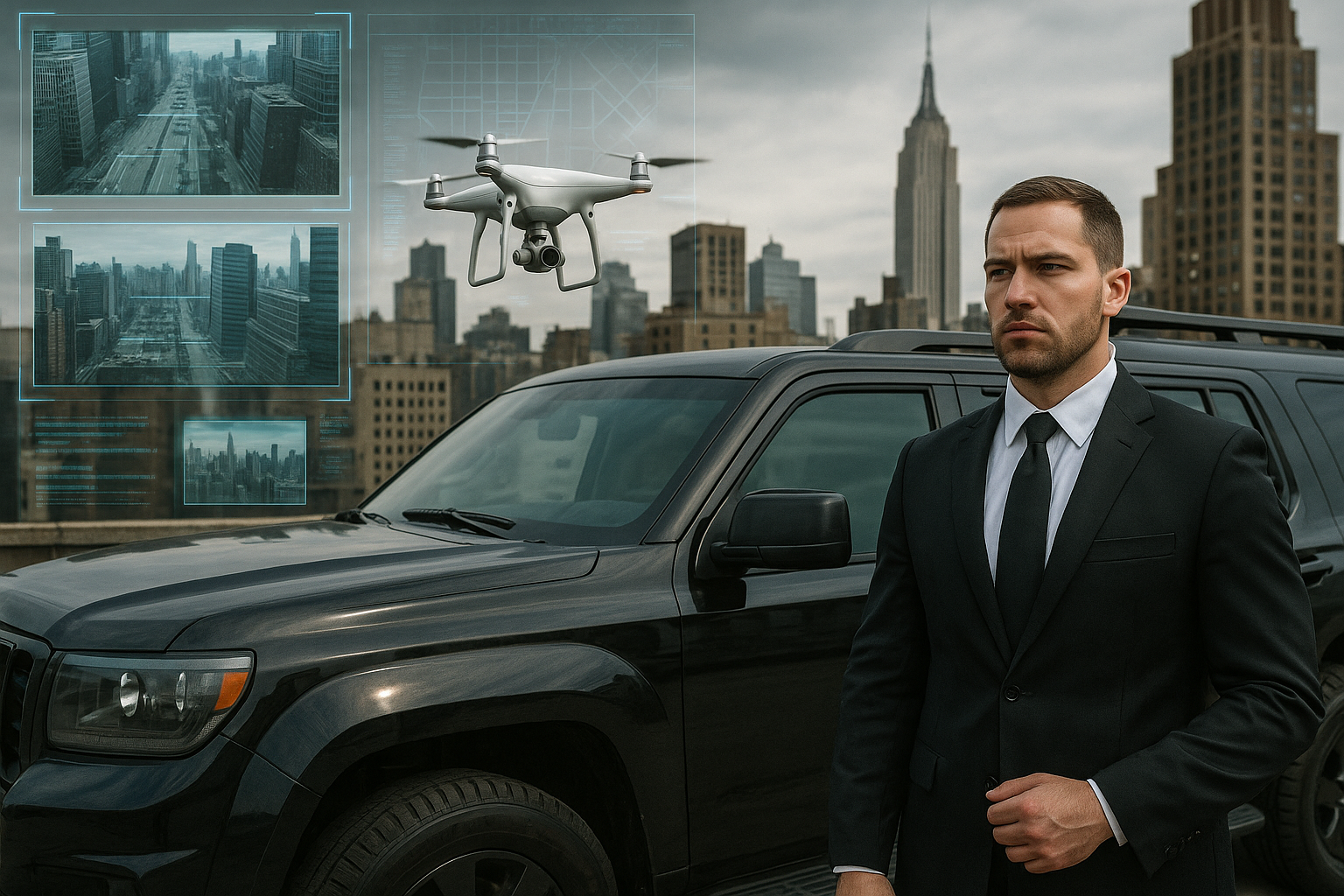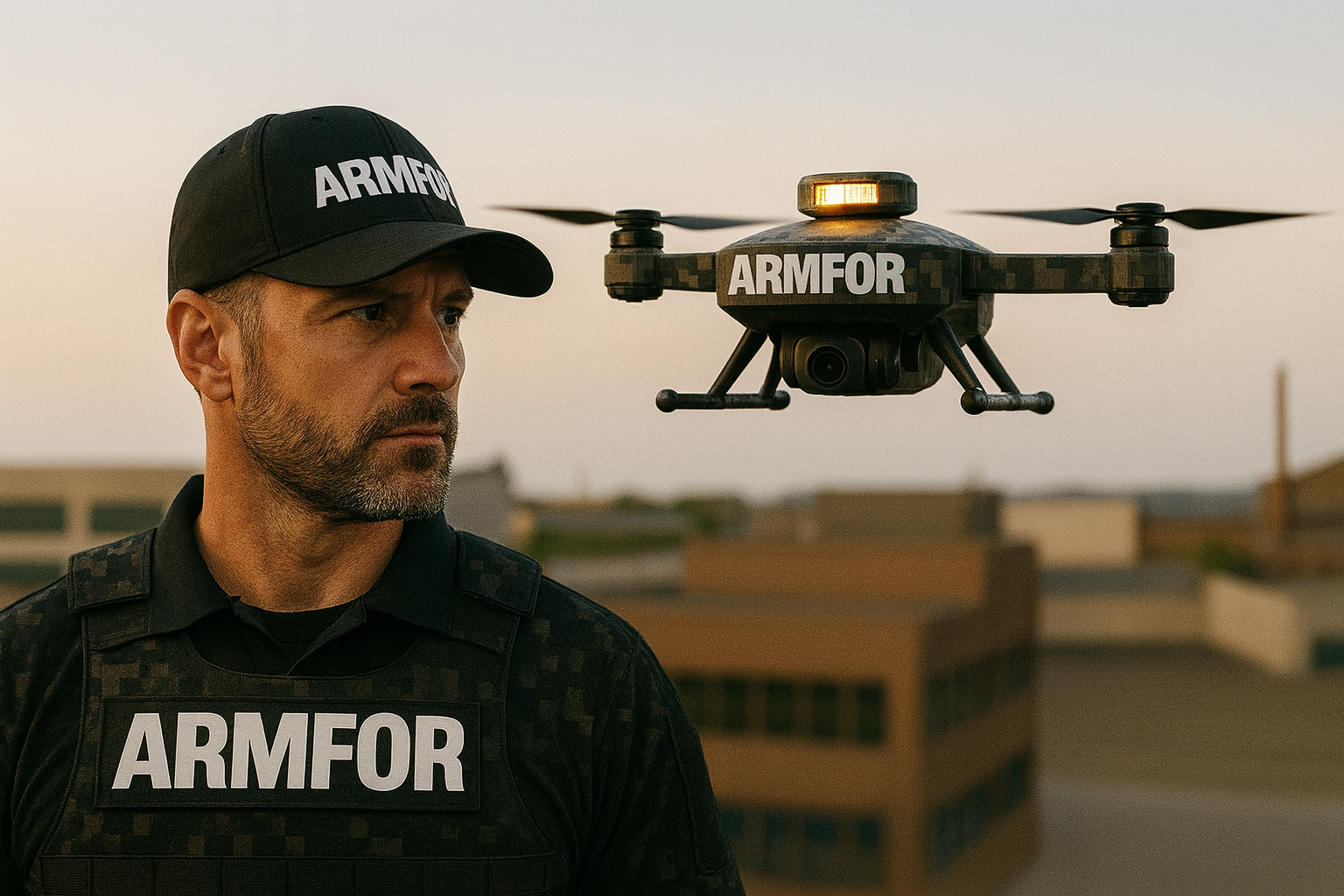Why Executive Protection Needs a Rethink in the Age of AI
By Quinn Adler • September 23, 2025

The old playbook no longer works against modern threats to leaders and executives
For years, executive protection meant having a guard nearby, an armored car outside, and a route planned in advance. That approach worked when the worst-case scenario was a stalker in a crowd or a protest that got out of hand.
But those days are gone. Executives now face AI-driven impersonations, smear campaigns that move markets, and shooters who set up from rooftops with a clear line of sight. The murder of UnitedHealth’s CEO, the Park Avenue attack that killed Wesley LePatner of Blackstone, the assassination of Charlie Kirk, and the attempted assassination of President Donald Trump all show the same thing: the old playbook isn’t enough. Executive protection has to evolve.
The Old Model: Strong but Limited
The traditional model was built on presence. Agents stayed close, vehicles were staged, and routes were locked down. That visible protection still matters. A professional guard can calm a tense encounter or stop someone from getting too close.
The problem is what it leaves out. Old methods don’t address elevated threats like rooftop shooters, or the new digital risks that start online and spill into real life.
The New Threat Landscape
AI has added new dimensions to executive security:
- Deepfakes and voice cloning trick staff into handing over access or information.
- AI-powered surveillance pieces together patterns from cameras, posts, and public data.
- Online attacks damage reputations in hours, fueling protests or even violence.
- Weaponized drones are cheap, accessible, and capable of precision strikes.
Add to that the rooftop factor — both Kirk and Trump’s attackers positioned themselves above their targets — and you see where the blind spots are.
Why the Old Approach Falls Short
Security isn’t just about standing next to a client anymore. It’s about controlling the angles, clearing rooftops, monitoring digital chatter, and defending reputation.
A proper risk assessment today should ask:
- Which rooftops and windows overlook the event site?
- Who is monitoring those blind spots in real time?
- What false narratives are gaining traction online?
- Could a deepfake or impersonation put the client at risk?
When those questions don’t get answered, the client is left exposed.
What Modern Executive Protection Looks Like
The new model blends people and technology:
- On-the-ground agents for presence and judgment.
- Rooftop sweeps and elevated position checks before every event.
- Drone overwatch to scan blind spots and provide live video.
- AI monitoring for threats, chatter, and anomalies online.
- Reputation defense to stop false narratives before they escalate.
- Command center integration so everything is visible in one place, in real time.
This layered approach closes the rooftop gaps seen in recent attacks and adds protection in the digital space, where most threats now begin.
How ARMFOR Does It
At ARMFOR, we don’t treat executive protection as a bodyguard service. We combine physical presence with tech and intelligence.
- Our teams clear rooftops and elevated positions before events.
- Drones scan above, behind, and across large spaces.
- Our command center ties together guard reports, drone feeds, and AI monitoring, giving clients a single live dashboard.
- We monitor reputation and digital risks, because what happens online can spark a real-world threat within hours.
This is executive protection for the world we live in now, not the one we left behind.
Why does executive protection need to change in the age of AI?
Because threats now come from more than just physical encounters. Executives face deepfakes, impersonation attempts, and online smear campaigns that can put both their reputation and safety at risk.
How does AI create risks for executives?
AI makes it easier to clone voices, generate fake videos, and track routines through public data. These tools give bad actors new ways to target leaders, sometimes without ever getting close.
What role does reputation play in executive protection?
Reputation is part of an executive’s safety perimeter. A viral deepfake or false story can trigger protests, damage a company’s credibility, or even inspire targeted violence. Protecting reputation is protecting the executive.
How do drones support executive protection?
Drones extend visibility into blind spots and rooftops that ground teams cannot easily monitor. They provide real-time footage that feeds into our command center, giving a wider security net.
Does technology replace human bodyguards?
No. Technology extends coverage and provides intelligence, but human agents bring instincts, authority, and decision-making. The strongest protection combines both.
How is ARMFOR different from traditional security companies?
ARMFOR blends physical presence with AI monitoring, drone patrols, and reputation protection. Our command center integrates it all so clients see one clear picture instead of fragments.
To learn more about ARMFOR’s executive protection services and how we safeguard decision-makers, contact our team.
ARMFOR INTELLIGENCE REPORTS
Exclusive ARMFOR intelligence on threats and protection — built for those safeguarding people, assets, and operations.
Contact Us
We will get back to you as soon as possible.
Please try again later.
SHARE THIS
RELATED CONTENT





